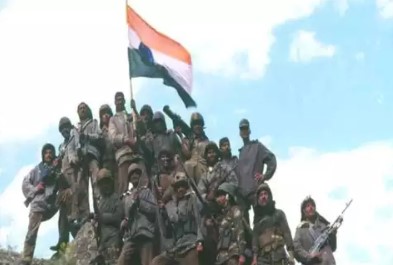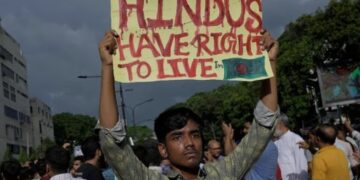Group Captain K Nachiketa Rao (retd), a fighter pilot during the Kargil War, has shared harrowing details of his capture by Pakistani forces after ejecting from his MiG-27 aircraft due to engine failure. In a recent recount, he described the intense and traumatic moments of his captivity and the torture he endured.
“Twenty-five years is a very long time, but even now, that guy’s eyes and face are clear in my mind. He shoved the barrel of his AK-47 in my mouth. I was looking at his trigger finger, wondering if he would pull it or not,” Rao said, reflecting on the experience.
The Ejection
On the day of the incident, Flight Lieutenant Rao was part of a mission from Srinagar targeting a significant enemy logistics hub in Munthu Dhalo. After firing rockets, his MiG-27 experienced an engine failure. At an altitude of over 15,000 feet, he had no choice but to eject from the aircraft. “It was a fortunate decision because within a few seconds, I saw the airplane crashing onto the hillside. I could have been with it,” he recalled.
The Capture
Upon ejecting, Rao found himself in a challenging situation. With snow around and only a small pistol with 16 rounds, he was disoriented and uncertain of his location. “I was hiding classified information and trying to gauge the situation. Hearing firing around me, I took cover behind some boulders but soon encountered Pakistani troopers. I fired my pistol, but it was ineffective,” he said.
The young pilot was soon captured and faced the terrifying barrel of an AK-47. “I was looking at his trigger finger, whether he would pull it or not. Destiny played a part as the Army captain in charge intervened,” Rao added. The Pakistani Army captain convinced his troops that Rao was merely doing his duty, saving him from further harm.
The PoW Nightmare
Rao was taken to a campsite and then flown to Skardu, where he endured what he described as “soft interrogation.” He was eventually transferred to Islamabad and Rawalpindi, where he faced harsh treatment. “Staying alone in a cell with intense interrogation techniques — heat, standing, hitting, and deprivation of food and sleep — was gruelling. They aimed to break me mentally, physically, and emotionally,” Rao described.
He was fortunate to avoid “third-degree” torture, as the decision was made to return him to India before that stage. “The systematic process involved physical and mental hardships, including high voltage bulbs and denial of basic needs. The pain was overwhelming,” he said.
The Good News
Rao described the relief of his return home. “I was sent to a safe house, given new clothes, and basic facilities. It was a turning point when I realised something had changed. After some medical checks by the International Red Cross Society, I was handed over to the Indian embassy. I was able to speak to my parents and Prime Minister Atal Bihari Vajpayee,” he said.
After the Return
Following his return, Rao was unable to continue flying fighter jets due to compression injuries on his spine from the ejection. “The injuries were complicated by the lack of rest post-ejection. I was shifted to transport aircraft and unmanned aerial vehicles. I retired in 2017 and transitioned to commercial flights,” he explained.

















